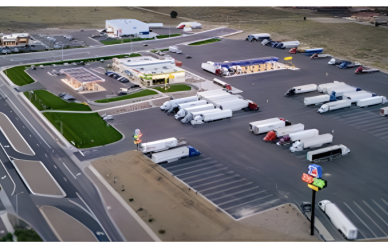Truckers often make the risky choice to become owner-operators without considering how they will actually make money. While they focus on buying the truck itself, they overlook the importance of revenue and planning for success. Revenue is crucial for any business, including trucking. To estimate revenues, truck owners must understand how freight rates work.
Some truck owners choose to lease their equipment to a carrier, allowing them to take advantage of the carrier’s resources while earning a set per-mile rate. The carrier handles everything from finding loads to billing and permits, while the truck owner drives and collects the money.
It’s important to note that even per-mile rates are influenced by current freight rates. Owner-operators who are paid a percentage of load revenue are directly affected by these rates, particularly those who rely on the spot market with load boards or brokers. Spot rates fluctuate based on market forces and the number of trucks competing for available loads. Rates tend to rise during holidays and decrease during slower periods.
Understanding the market and its tendencies is crucial for running a successful trucking business. This includes being aware of temporary rate fluctuations caused by holidays and other occurrences, as well as the overall freight cycle that takes years to complete. The COVID-19 pandemic had a significant impact on the freight cycle, causing disruptions in 2020 but leading to a boom in freight afterwards.
Considering these factors and staying informed about the market is essential for truck owners who want to thrive in the industry. Revenue should always be a top priority when starting a trucking business.
Truck owners should strategically choose routes with good rates both ways. The DAT board, a load board, allows drivers to check average freight rates by city or area in advance for efficient planning. By doing so, they can avoid low-paying loads or ensure they earn enough on the return trip to offset the low outbound rate.
Understanding seasonal trends is crucial. For instance, truckers with temperature-controlled equipment should know when harvests occur in different regions to position themselves for higher rates. Flatbed truckers can study construction trends for profitable loads of building materials and other goods.
Determining profitable rates requires knowing the cost per mile of running the truck. Maintaining records of all business costs, including driver’s pay and benefits, and dividing that by the total miles driven will help calculate per-mile costs. It’s essential to consider all necessary miles, including empty miles to the pickup point.
According to a June 2023 study by the American Trucking Research Institute (ATRI), the industry average cost per mile in 2022 was $2.25, however, costs may have increased due to insurance, parts, and interest. Your own cost per mile may vary depending on factors like route, fuel costs, and equipment expenses. Accepting loads below your operational cost is a surefire path to failure.
Source: The Trucker











